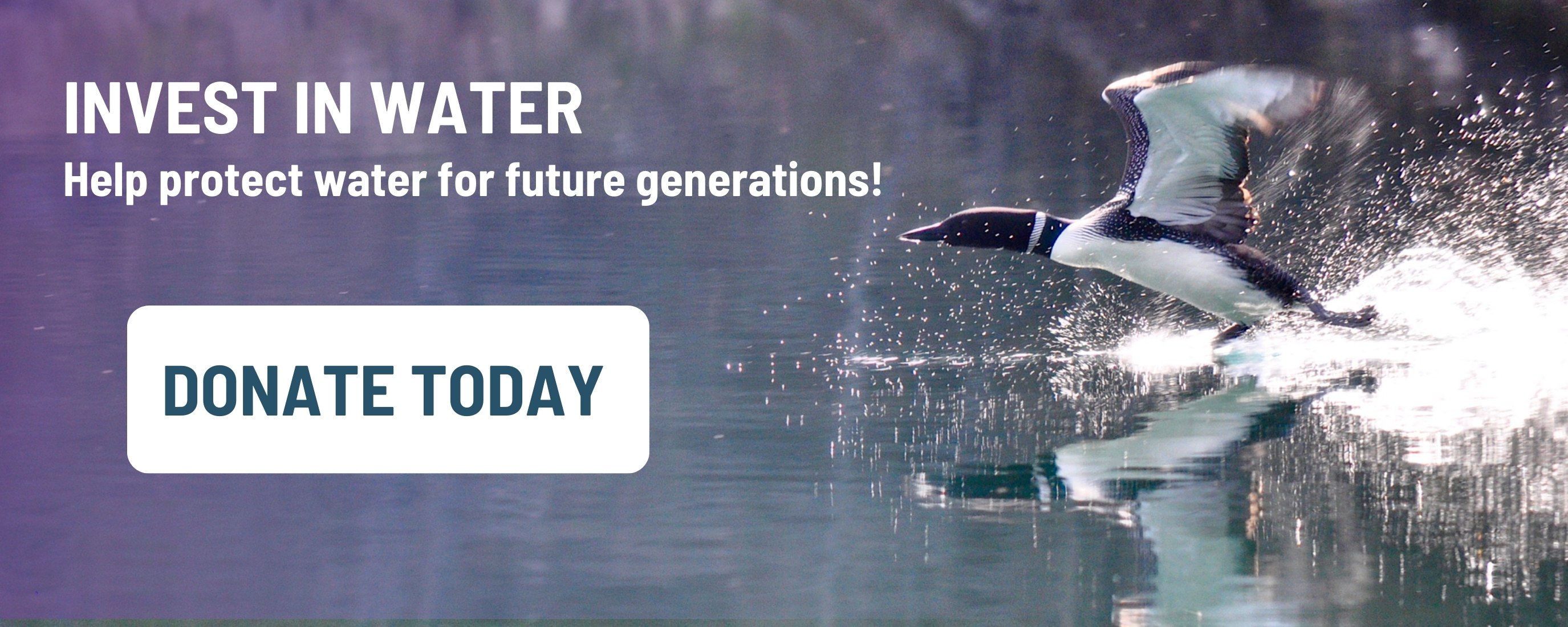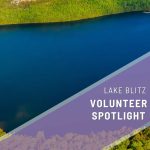Water for wildfire suppression, lake survey results, groundwater reporting & more 🔥💧
Banner photo courtesy of Tracey Halladay, 2024 Lake Biodiversity Photo Challenge.
As wildfires blaze relentlessly across Canada with global temperatures reaching new record highs, one constant remains: water is our most important resource.
In the small West Kootenay community of Argenta, digital maps and a report containing detailed information on all available water sources in the area are proving to be a game changer for fire suppression crews from BC Wildfire Service and the volunteer Argenta Safety and Preparedness Society (ASAPS) as they battle wildfire. Water Resources for Wildfire Suppression was developed thanks to a collaborative effort between Living Lakes Canada and the ASAPS, and allows firefighters to use their tablets or phones to quickly and easily find hidden water sources, vastly improving response time. This project utilizes local knowledge combined with data collected through our Columbia Basin Water Monitoring Framework and exemplifies how collaboration between NGOs like Living Lakes Canada and communities can achieve pivotal steps towards climate adaptation (more on this in our next newsletter).
Read on for additional updates on our freshwater stewardship programs and how we’re working with our partners to embolden climate action and water security at the local level.

New report sheds light on importance of lake foreshore conservation
The ever-growing popularity of lakes in southeastern B.C. is driving growing concerns about their health and the sustainability of the aquatic ecosystems they support. With this in mind, Living Lakes Canada undertook a four-year lake study from 2019-2023 to understand how lake foreshores in the B.C. Columbia Basin region are changing due to urbanization and development.
Using the lake survey methodology known as Foreshore Integrated Management Planning, or FIMP, the project targeted lakes in the Canadian Columbia Basin with federally designated aquatic Species at Risk and 10 lakes were surveyed or re-surveyed. The results have been culminated into a recently released report that outlines the survey outcomes and resulting recommendations.

Cast your vote for Public Favourite winners in our Photo Challenge
Over 450 stunning photo entries now fill the online gallery for the 4th Annual Lake Biodiversity Photo Challenge! Featuring breathtaking mountain lakes, wading Great Blue Herons, curious river otters, and much more, we need your help to select the Public Favourite winners in each of the four categories: Lake Landscapes, Lake Biodiversity, Lake Impacts and Youth Category.
Cast your votes by World Photography Day on August 19th and join us in celebrating the beauty and diversity of lakes across Canada. Winners will be announced in early September.

Spring groundwater levels highlight aquifer variability and need for expanded monitoring
Understanding groundwater systems using current, localized information is essential for ensuring a water secure future. This is the goal of our Columbia Basin Groundwater Monitoring Program, which is monitoring 32 volunteer observation wells across the Basin region. According to data collected up to the end of March 2024, groundwater levels across different aquifers are responding differently to surface conditions, emphasizing the need for expanded monitoring.
This first bulletin in our new Watershed Bulletin series reports out on the aquifer-specific information collected to support the sustainable management of this precious freshwater source. While the analysis covers data collected up until the end of March, updated groundwater data from our summer site visits is now available on the Columbia Basin Water Hub.

Southwest Alberta Groundwater Program breaks ground
As surface water sources become increasingly unreliable and scarce, many communities in Alberta are turning to groundwater.
In late July, Living Lakes Canada and the Oldman Watershed Council hosted an online event to discuss the state of groundwater in Alberta and introduce our new joint groundwater monitoring program that’s being piloted in the Oldman River Basin with support from the Piikani Nation Lands Department. The webinar features presentations and insights from a range of knowledgeable speakers, including experts from the University of Calgary and Alberta Environment and Protected Areas.

Living Lakes Canada’s Biomonitoring Team once again offering CABIN Field Training
Living Lakes Canada has been a long-term participant and facilitator of Environment and Climate Change Canada’s Canadian Aquatic Biomonitoring Network (CABIN). The two-day CABIN field course provides training in the skills and knowledge required to collect consistent and comparable data following the CABIN protocol and to participate in this nationally recognized and standardized biomonitoring program. Climate change and human land use activities continue to impact freshwater ecosystems — Indigenous and non-Indigenous community water stewardship groups can become CABIN-certified in order to better understand and support the health of their respective watersheds.
After a brief hiatus, our Biomonitoring team has increased capacity to provide CABIN field courses for a fee or with subsidies through collaborative fundraising efforts. The Biomonitoring team can travel to communities or territories across Canada to deliver these courses, funding dependent. Interested groups can check out our website below and contact us at biomonitoring@

Our Current Reads
When a wildfire came to my remote B.C. community, residents headed to the frontlines – The Narwhal
Climate change stresses the world’s largest freshwater river – United Nations
Glacier-Groundwater is still largely ignored in the Mountain Water Cycle, argue researchers – Technology Networks
Before and after: the NWT’s incredibly low water – Cabin Radio











